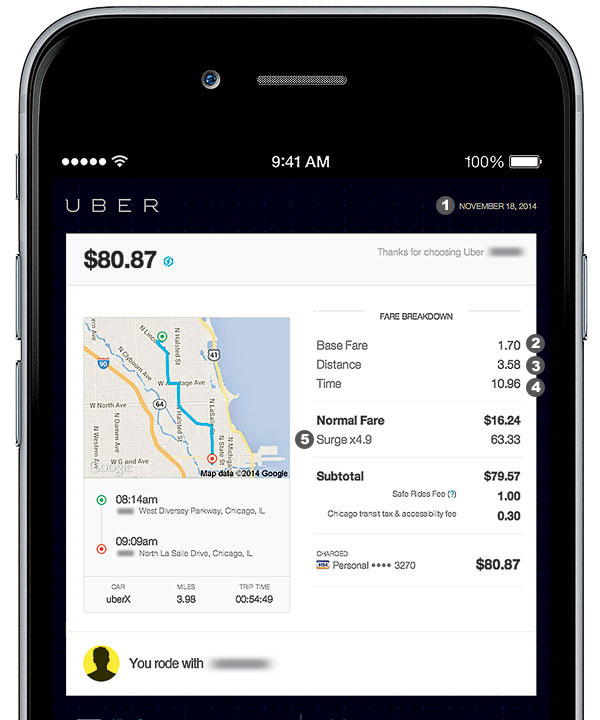It happens to the best of us: You order an Uber ride, and the fare estimate shows a price several times the normal rate because there’s a blizzard. Or it’s St. Patrick’s Day. Or a big concert is letting out. Whenever demand outstrips supply—even just during rush hour—maddening “surge pricing” hits. Next time, use one of these three tricks.
Hoof it—just a little. The prices Uber charges can be dramatically lower (or higher) just a few blocks away. So download a free iPhone app called SurgeProtector: It interacts with Uber’s app to check nearby rates automatically, letting you know if there’s a cheaper one within walking distance. (Come on, you know you need the exercise.)
Know when to cab it. Use another free app, Quxsi, to quickly compare fares from UberX (the most basic service Uber offers) with taxi fares. Decided on a cab but can’t find one? Use Uber’s taxi tool. It’ll cost you a $2 surcharge on the cab’s usual metered fare, but that will work out to less than UberX pricing at peak times.
Time it right. If you regularly catch a ride to work or home from Friday barhopping, become well versed in working the Uber rush. That means waking up a tad early or ducking out way before last call. Or use Uber’s Surge Drop tool to receive an alert when surge pricing has ended. As long as your departure time is flexible—you’re fine with staying late at work, for example—you’ll save some bucks to make the next happy hour all the better.
Anatomy of a Surge
How a less-than-four-mile trip can cost $80.87

1. You place an Uber order for a lift from Lake View to River North on the morning of November 18. Because of a couple of mishaps—a bus fire shuts down southbound Lake Shore Drive and a school fire halts CTA service on the Brown and Purple Lines—Uber imposes a surge multiplier of 4.9 times the usual fare.
2. Base fare for UberX, the no-frills service.
3. Distance rate is 90 cents per mile times 3.98 miles.
4. Time rate is 20 cents per minute for a 55-minute ride.
5. Wham! The surge multiplier makes up by far the largest part of your total cost.


